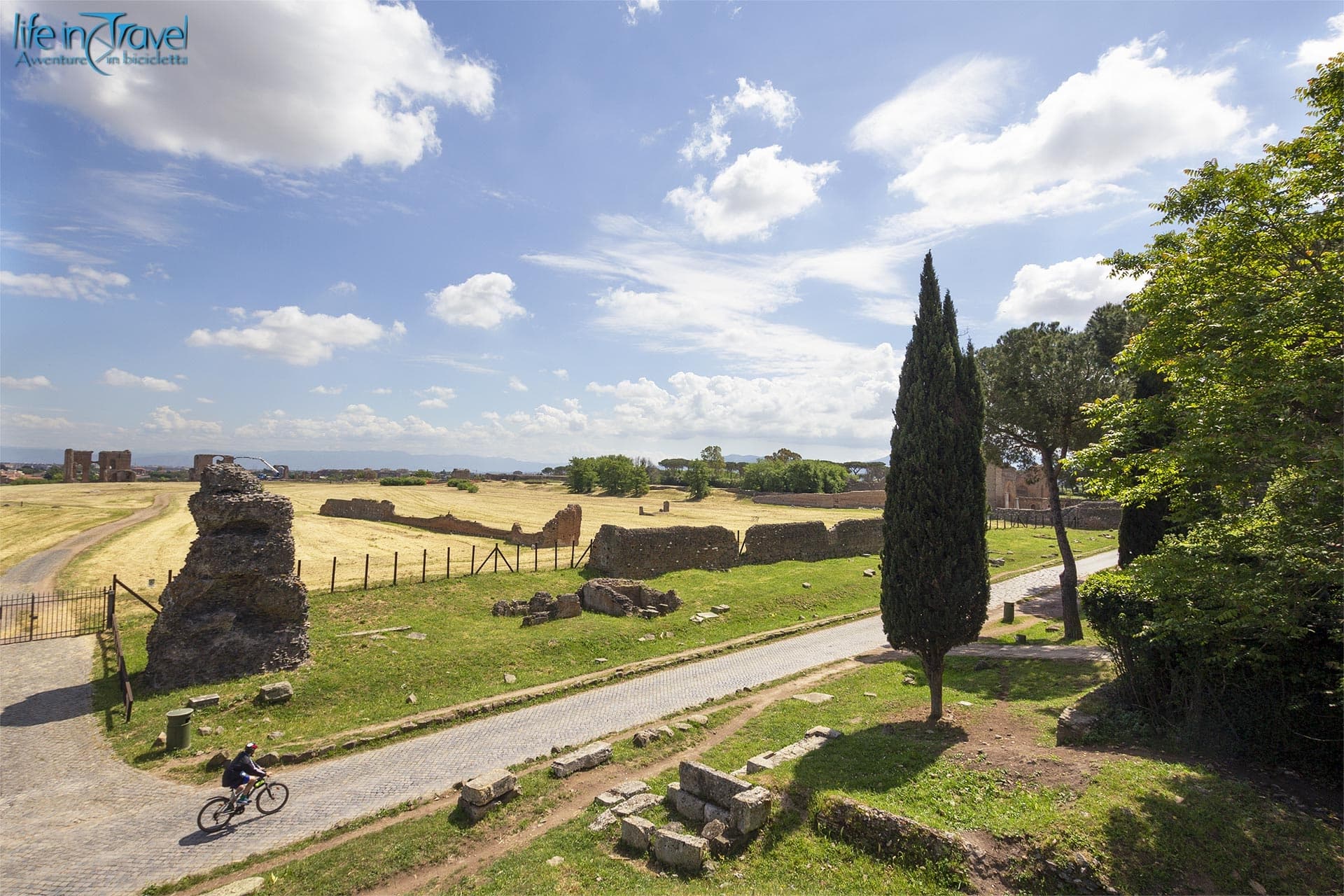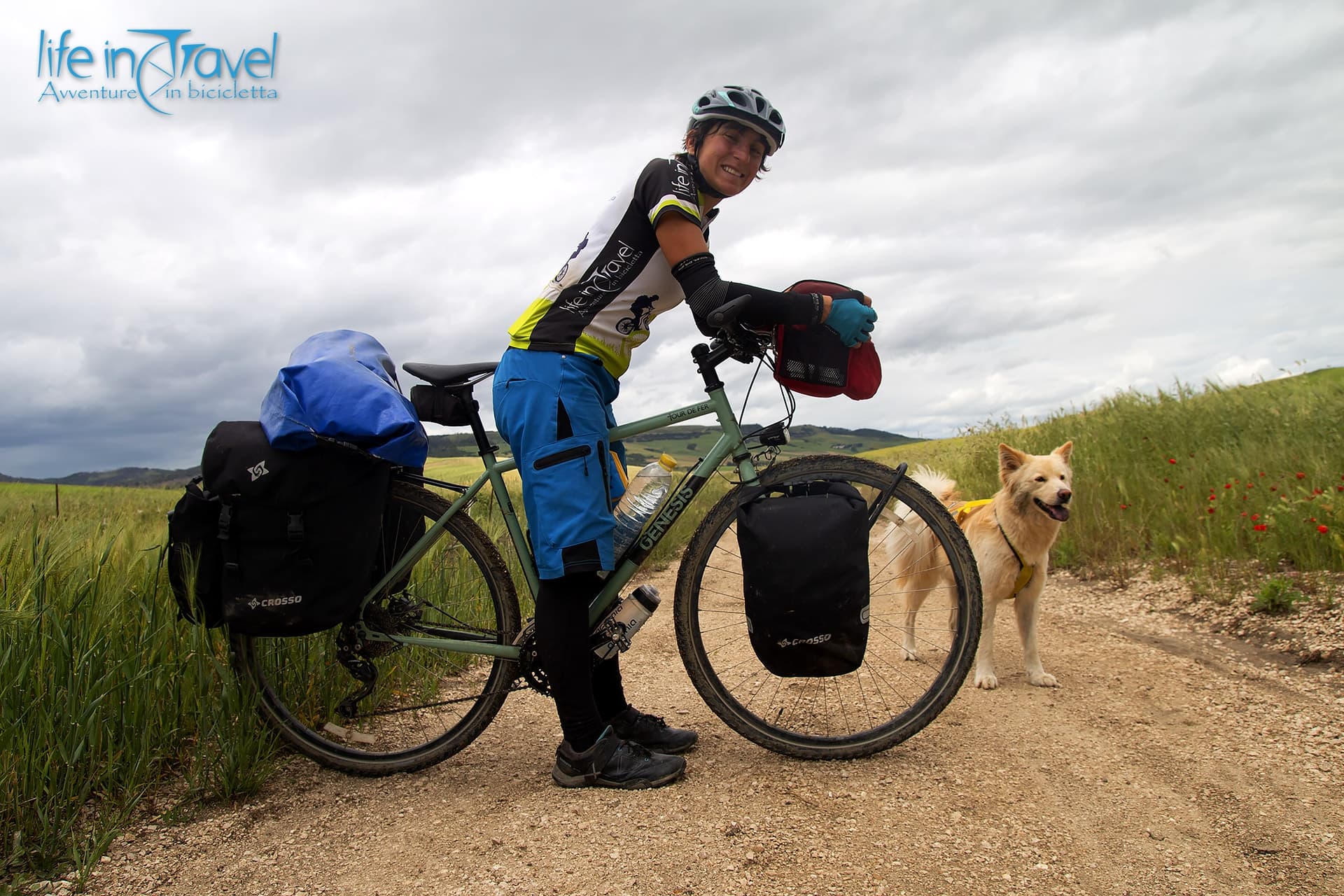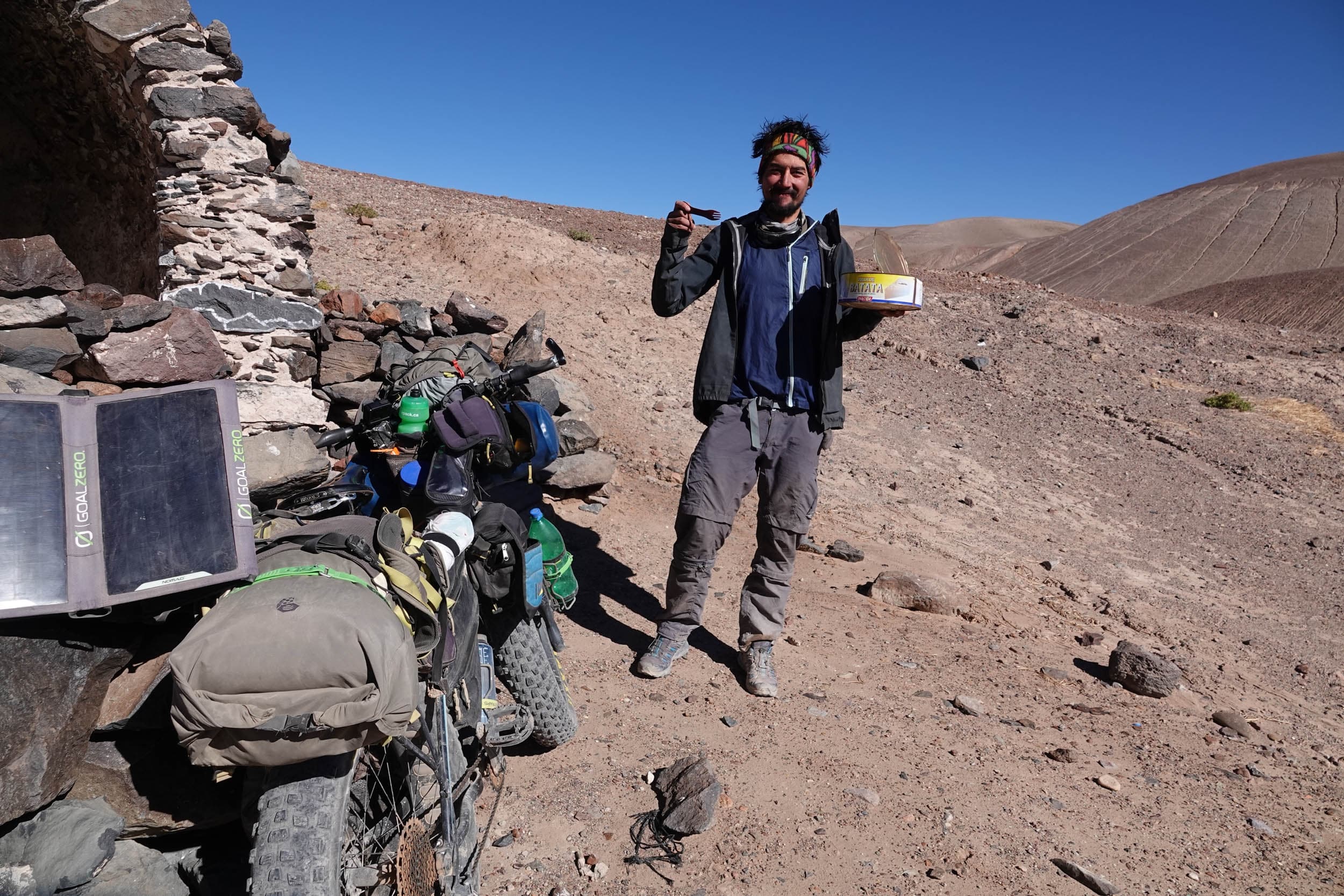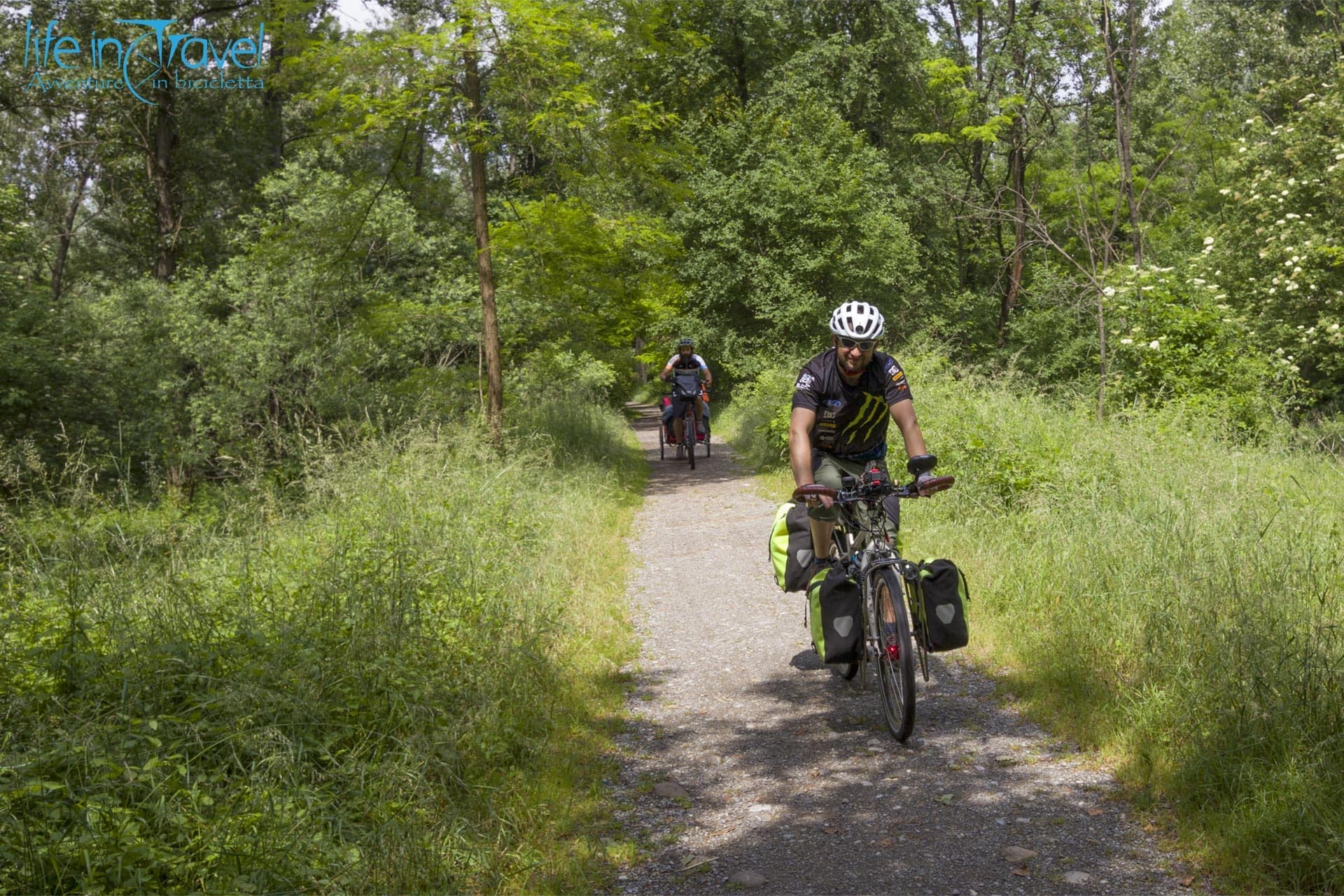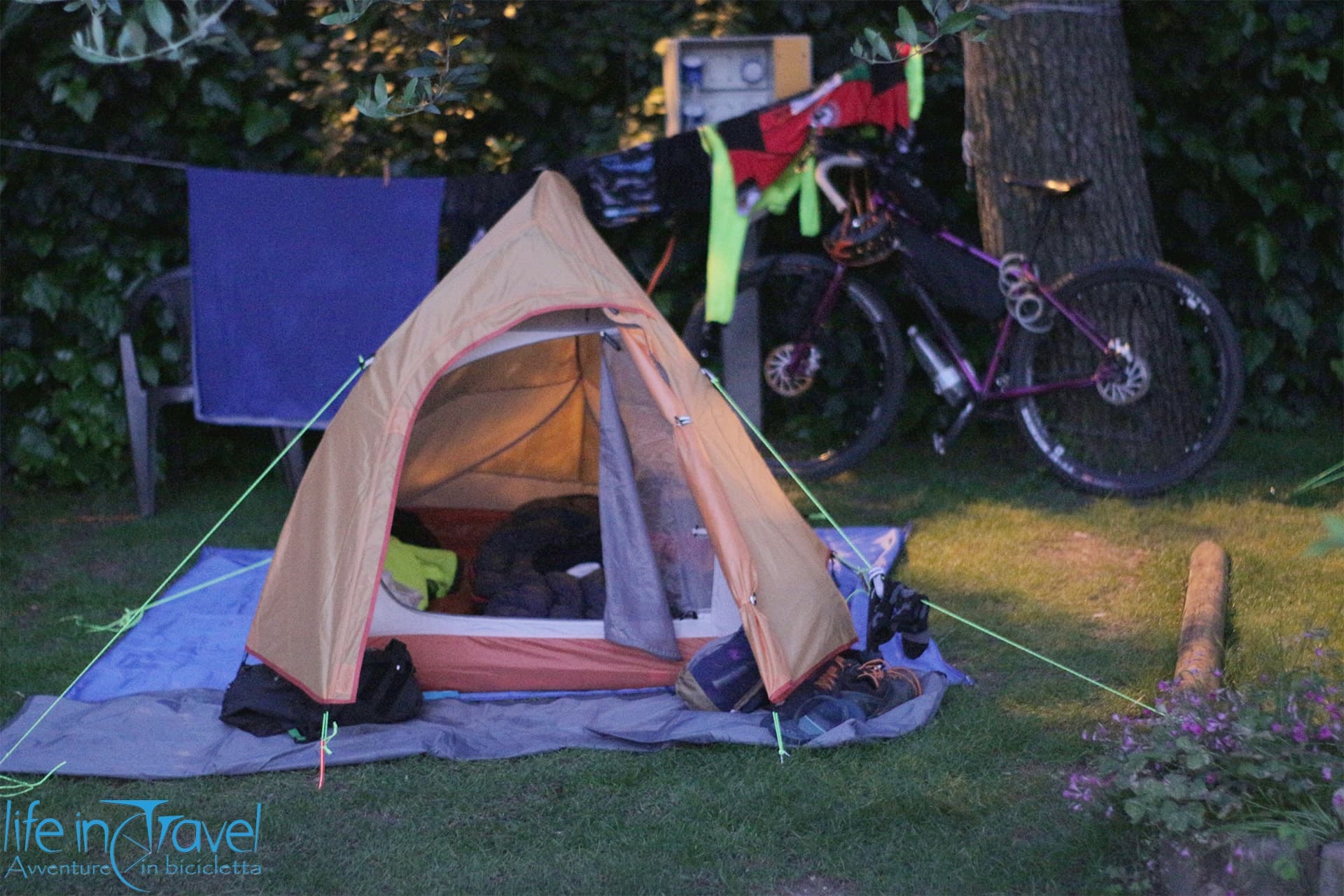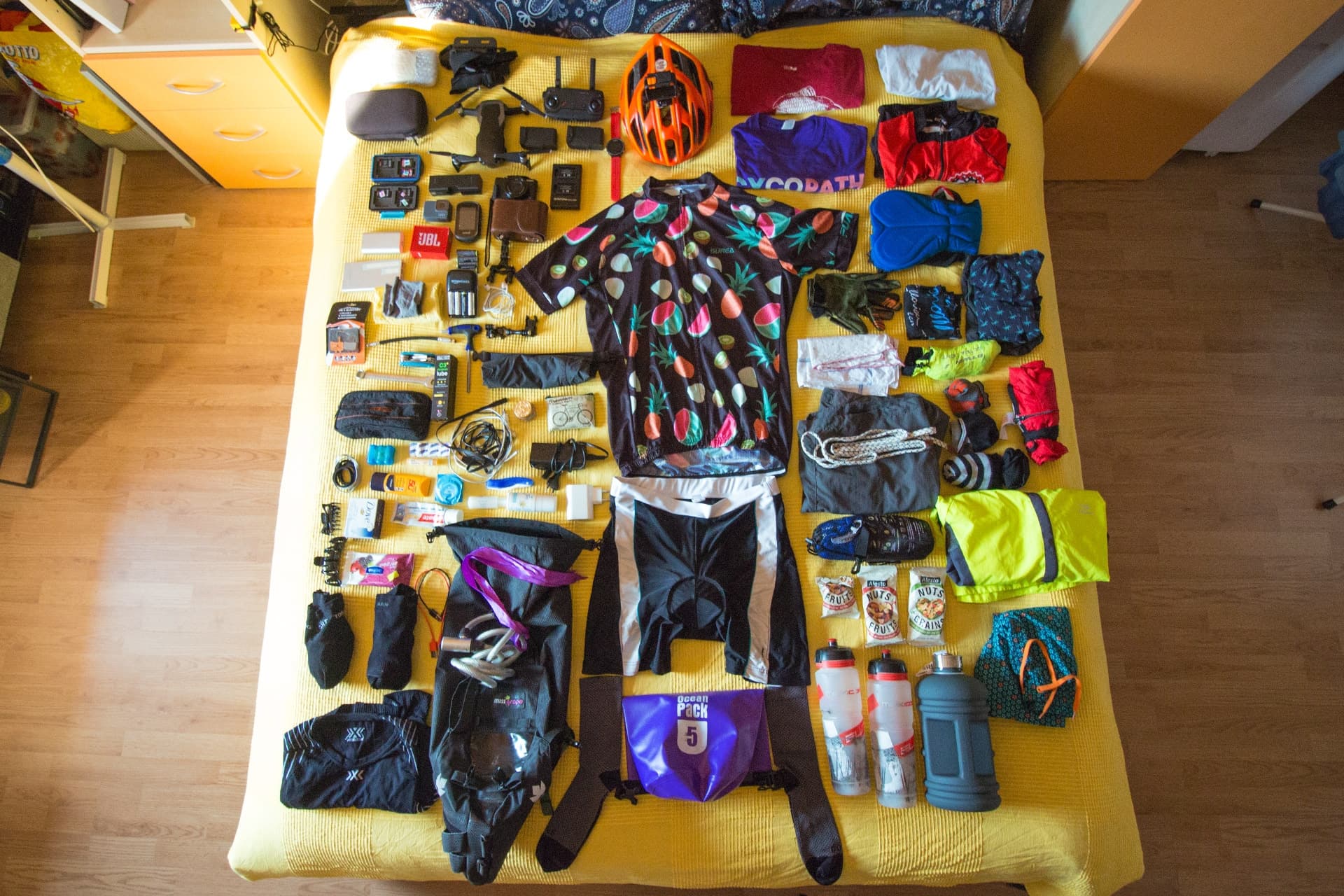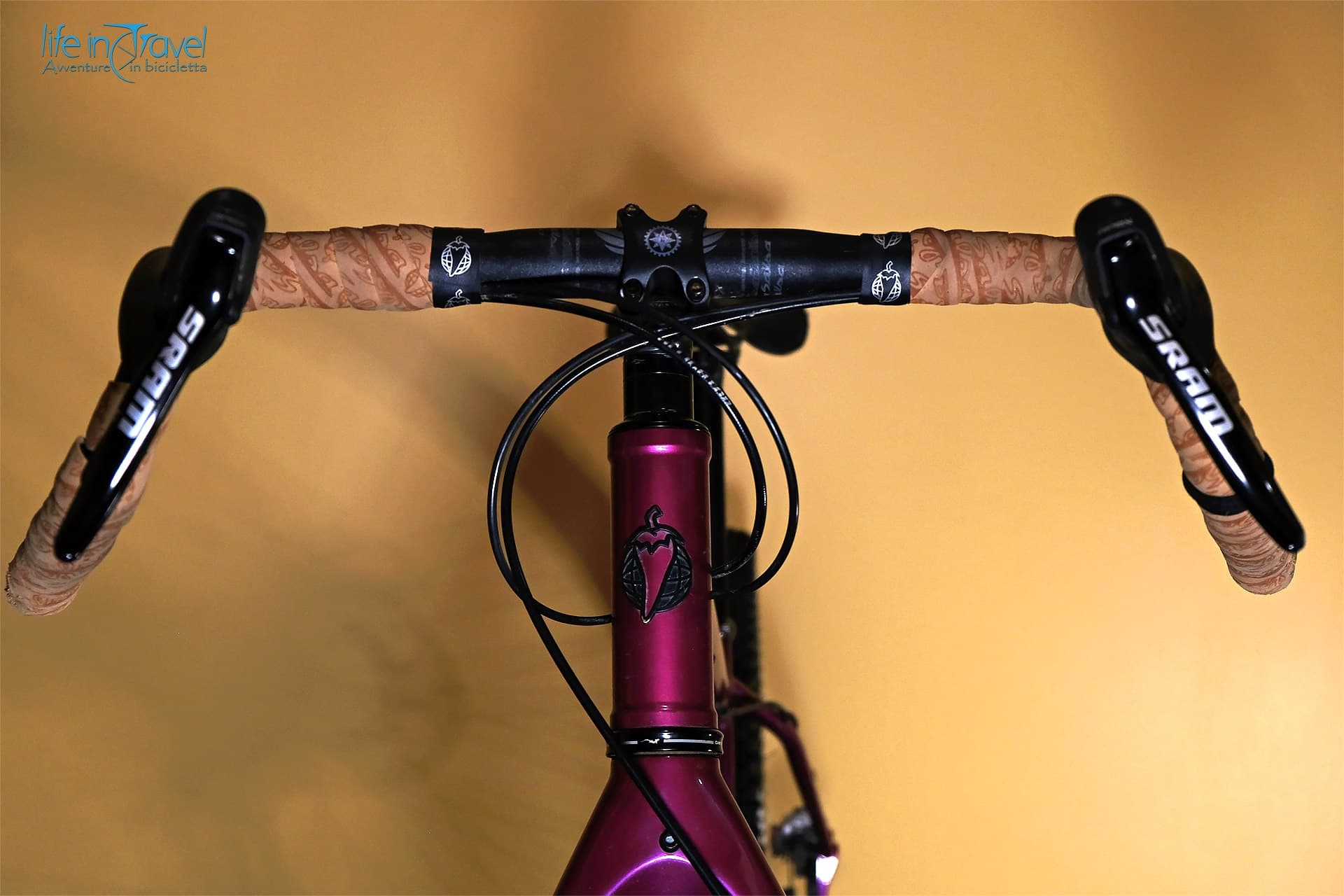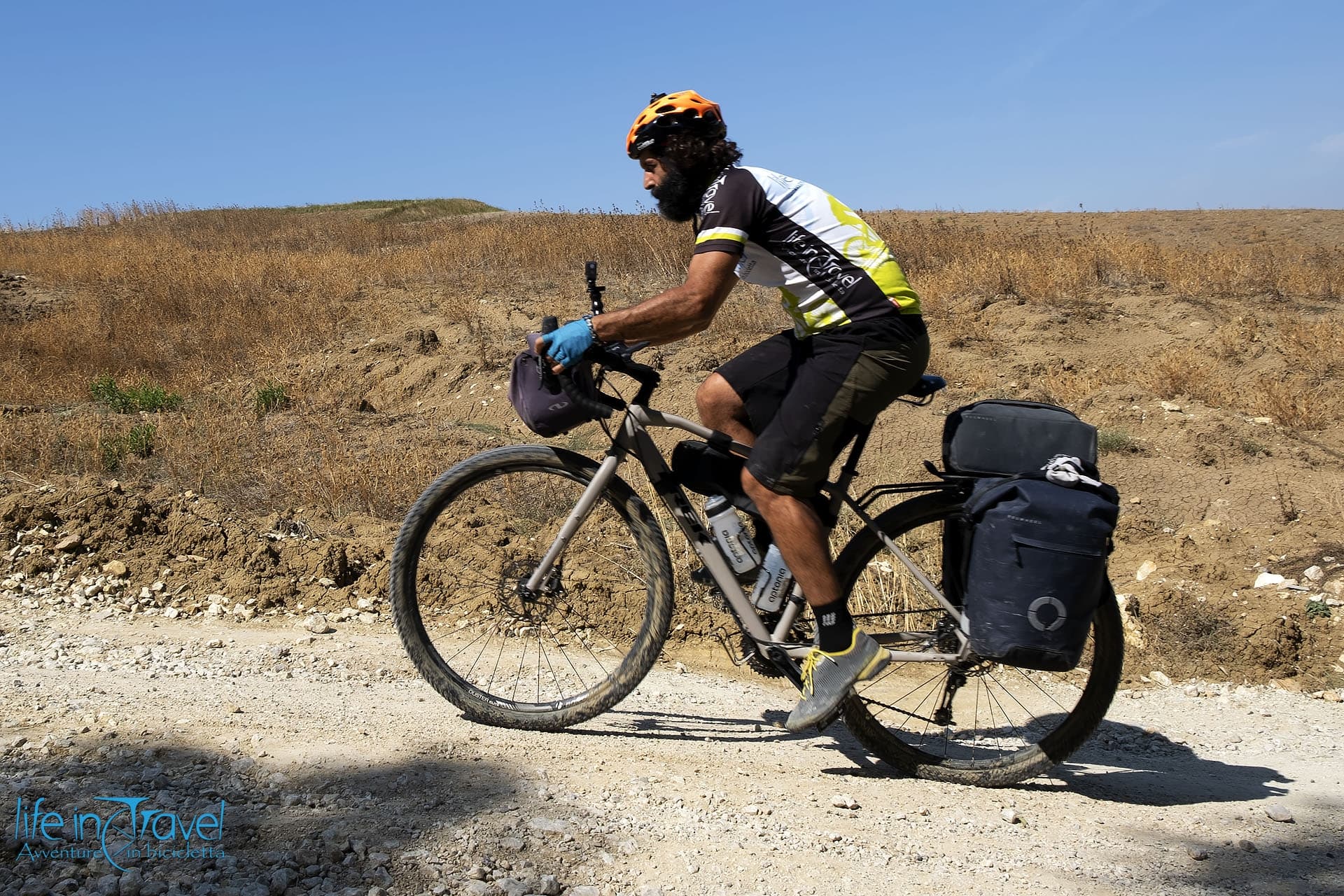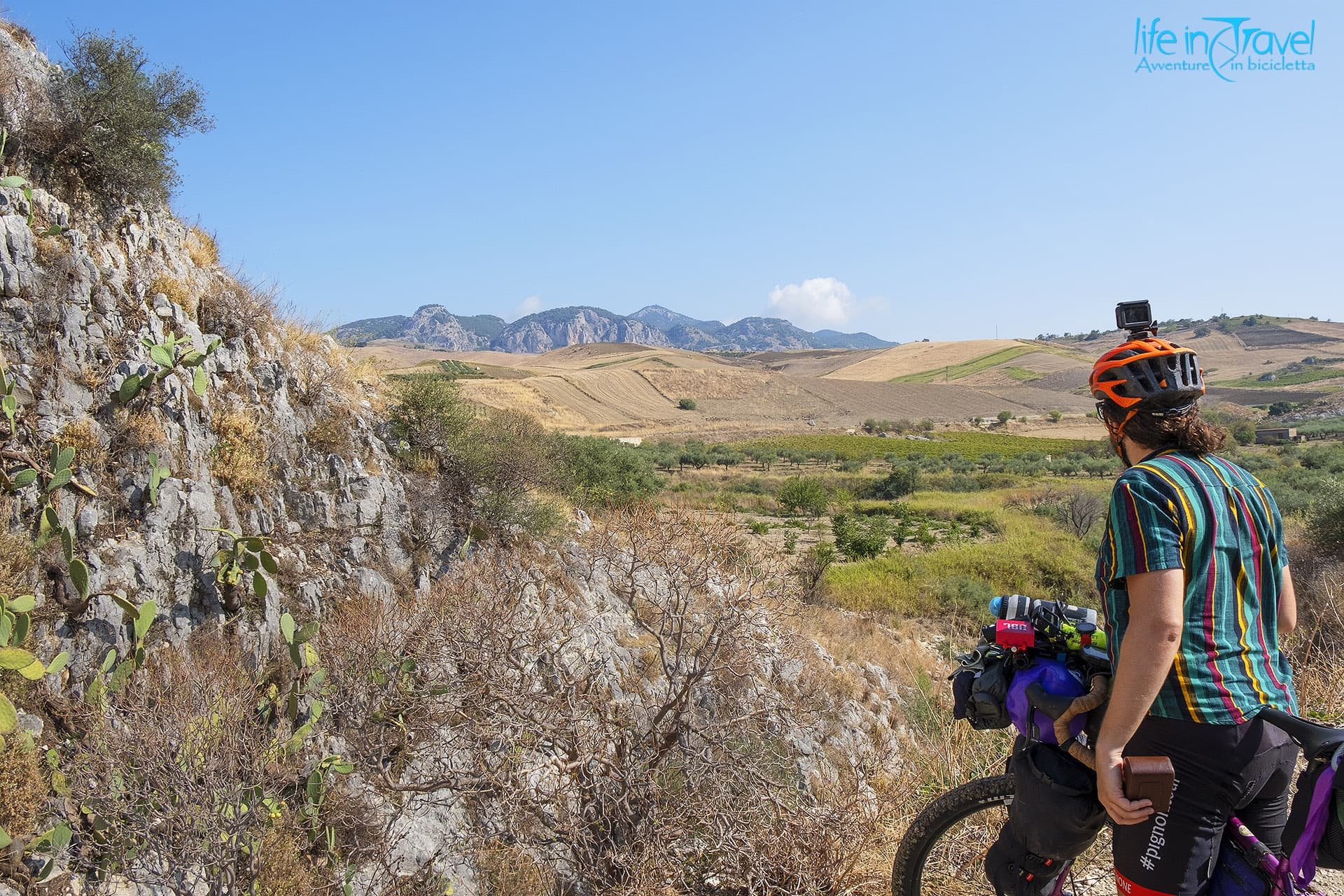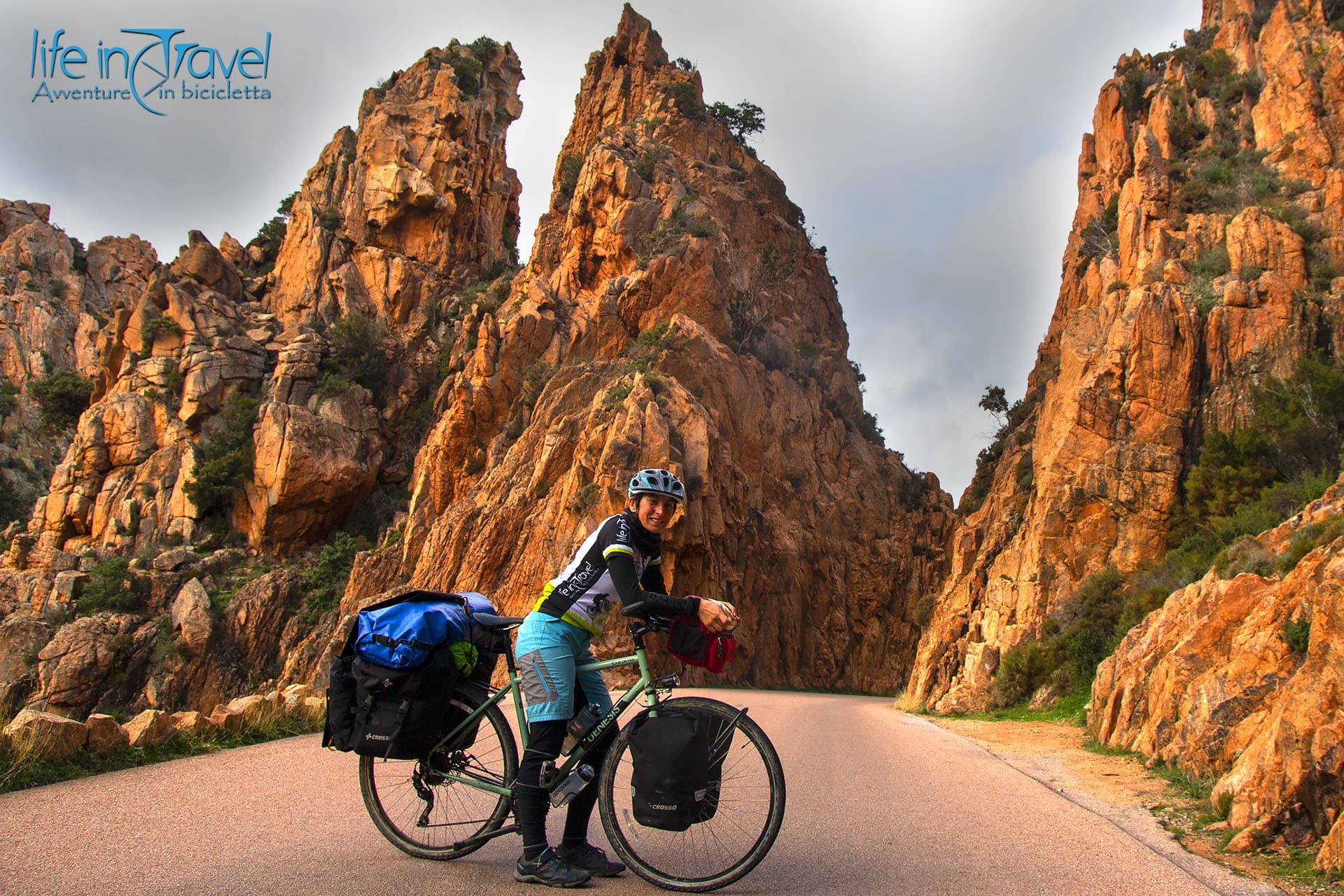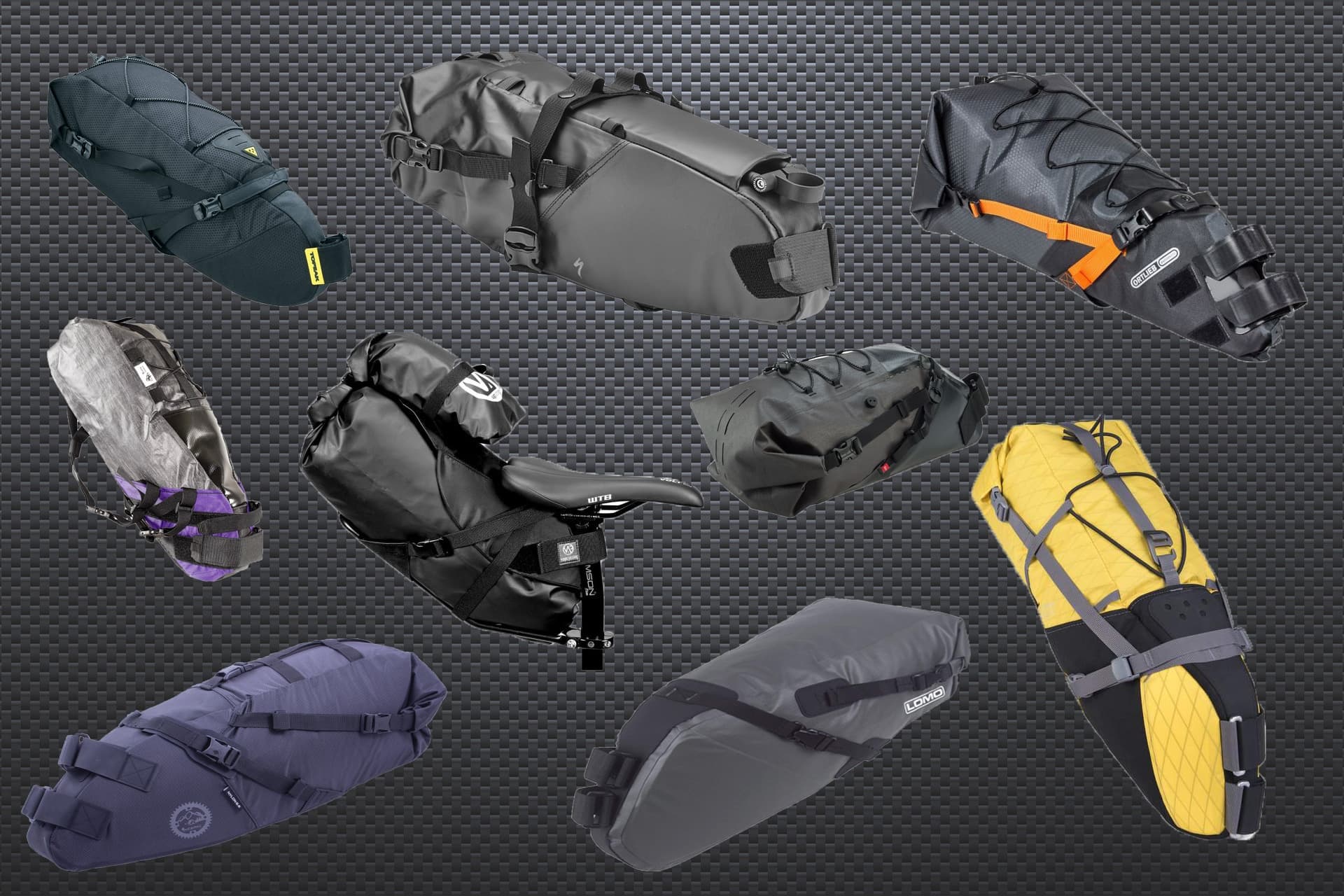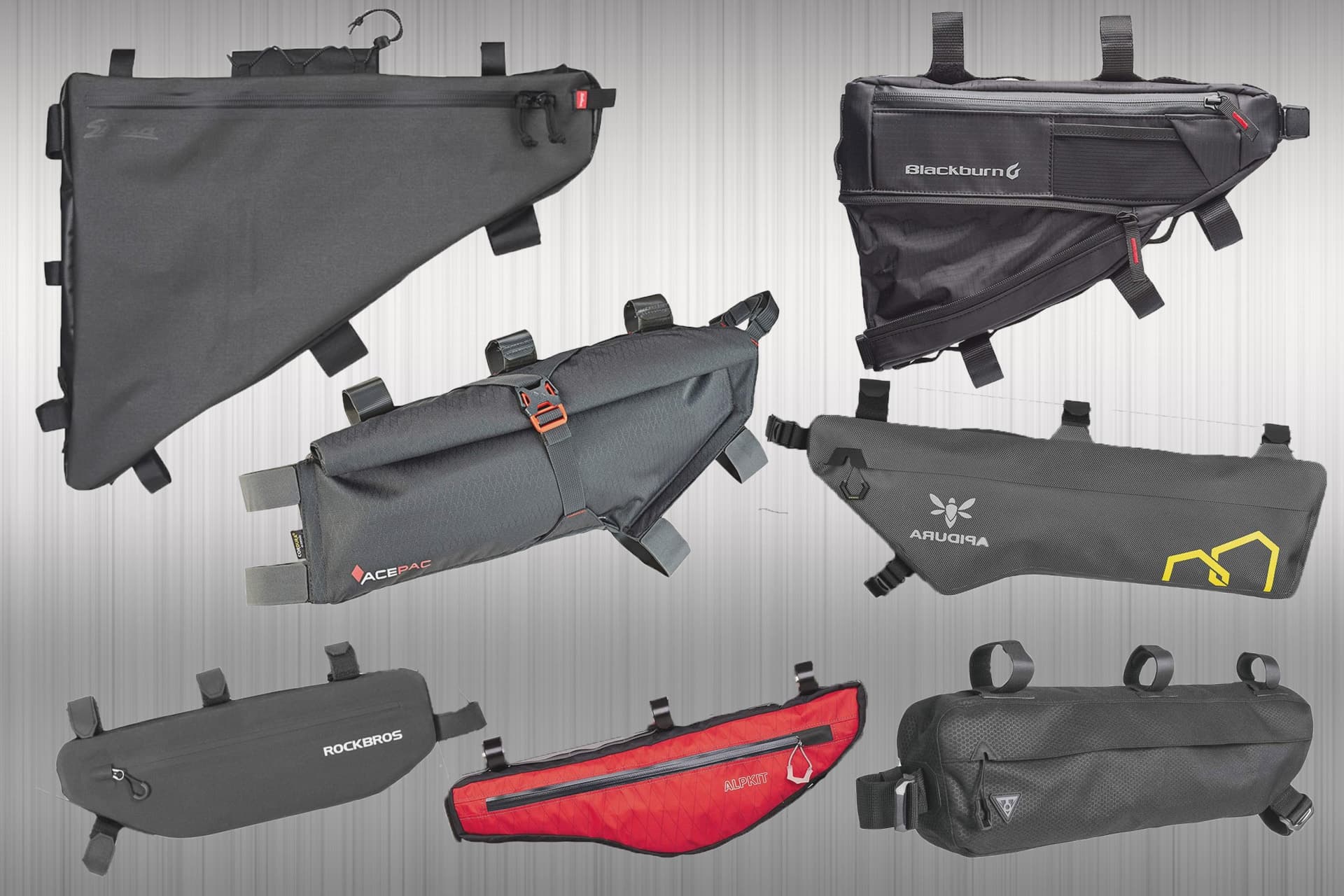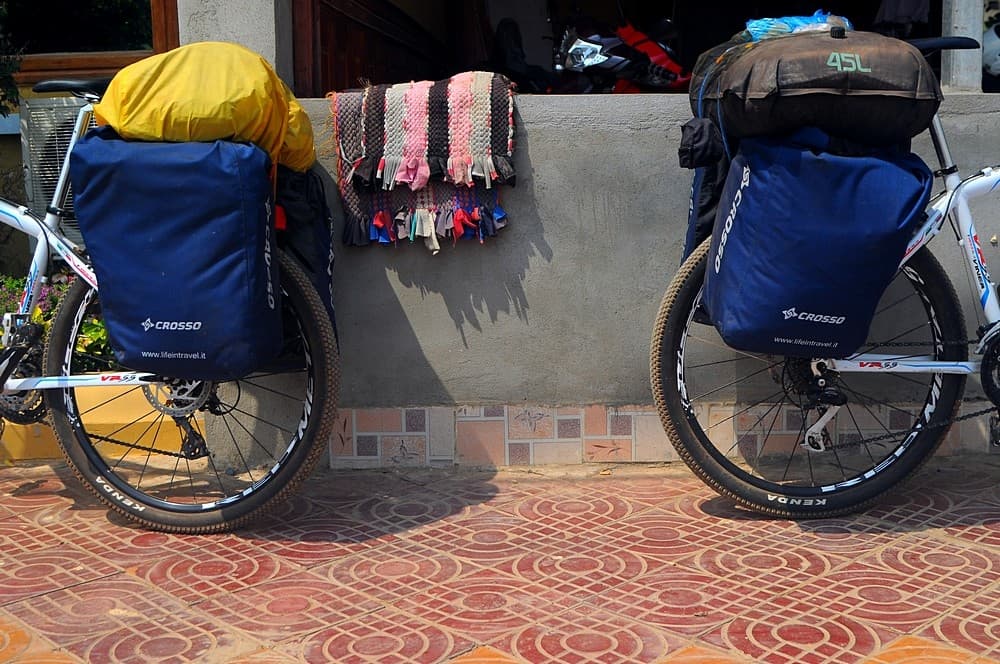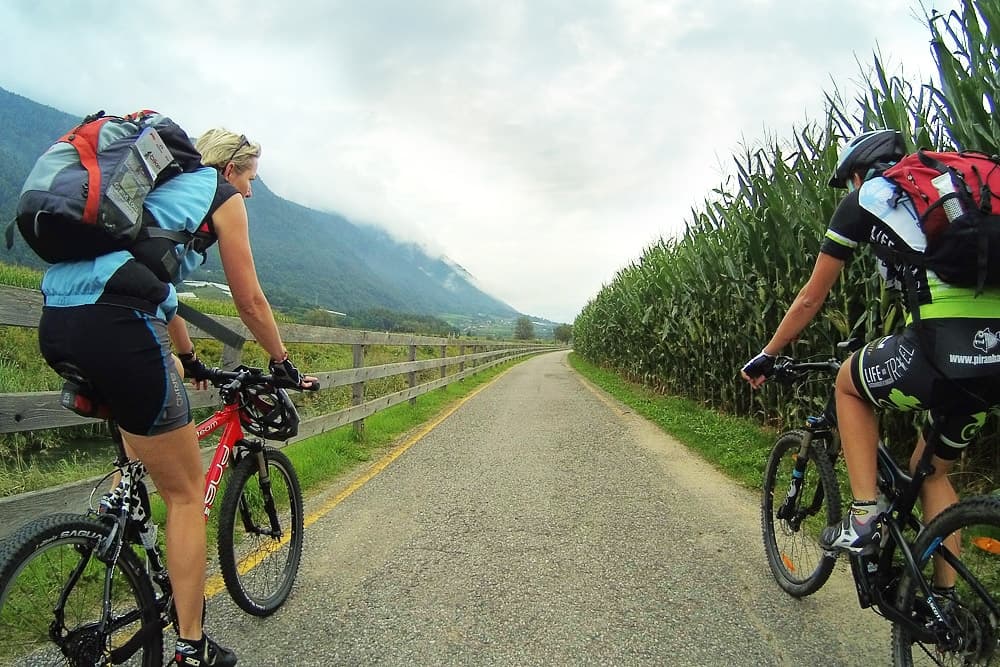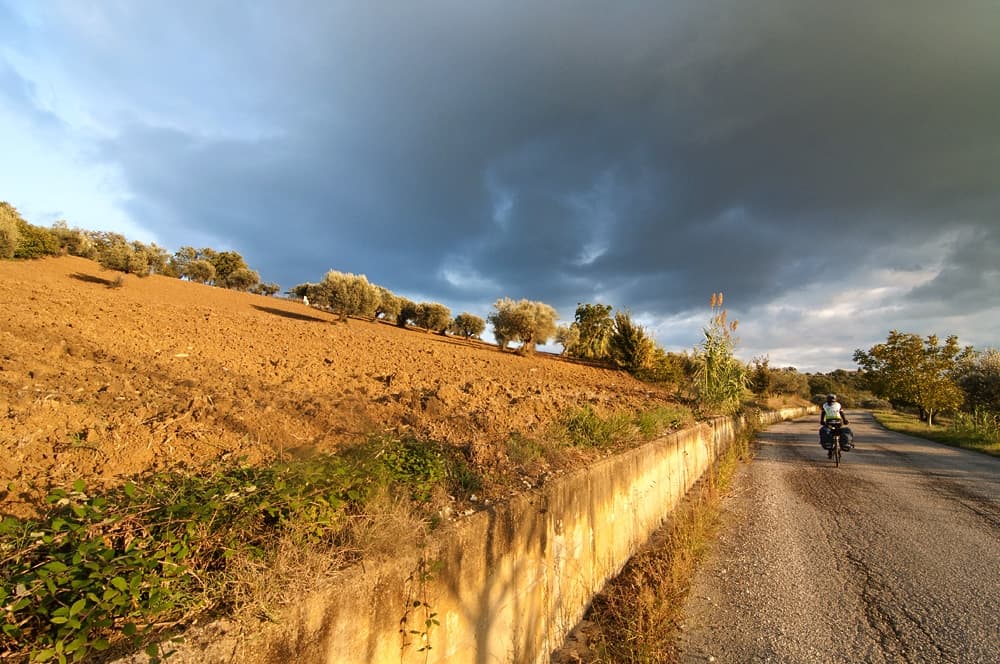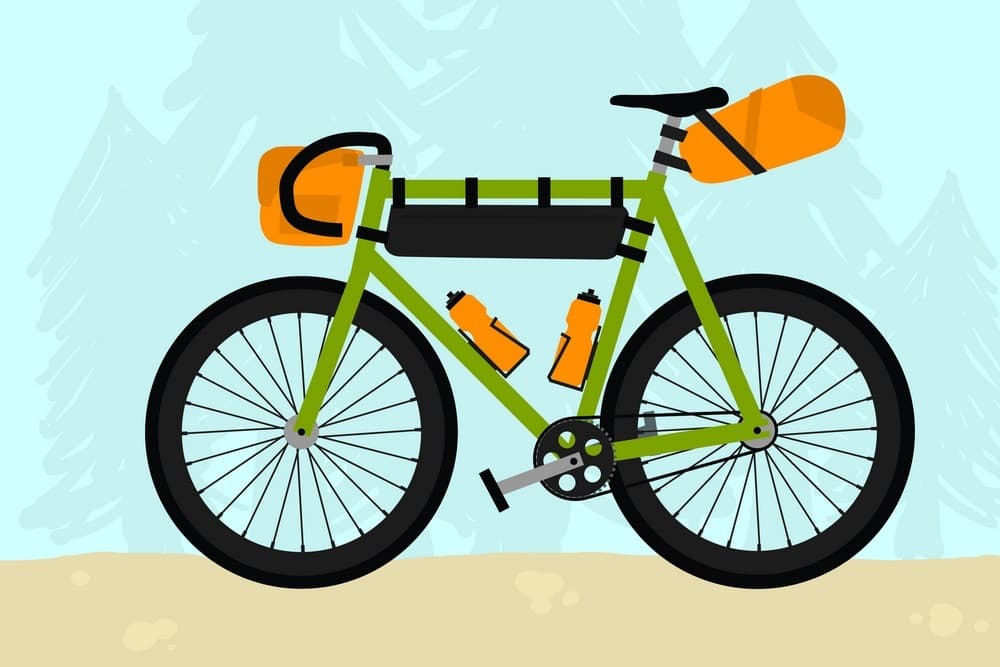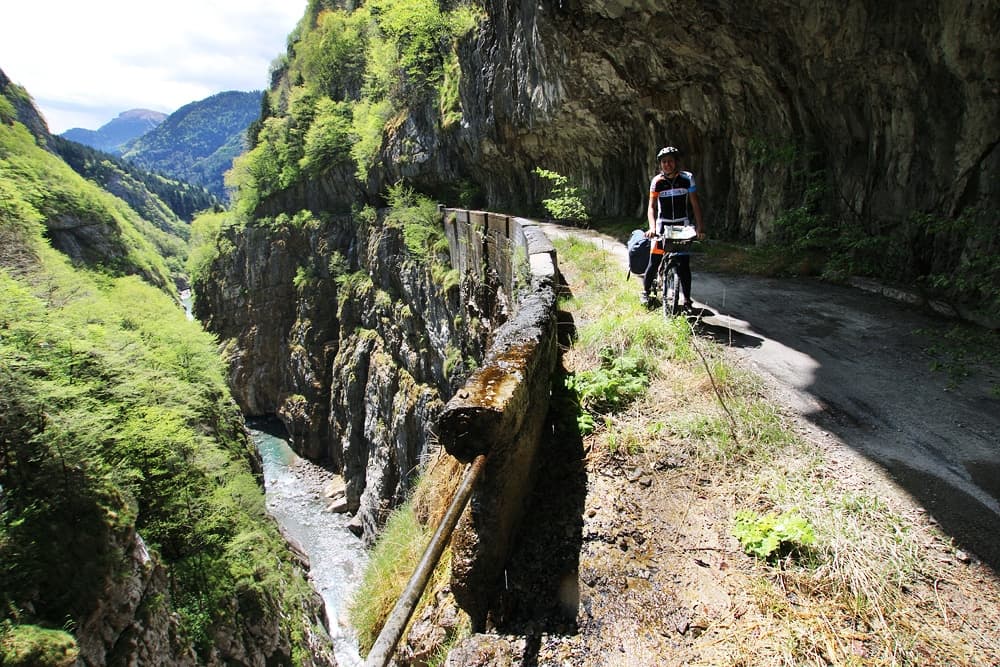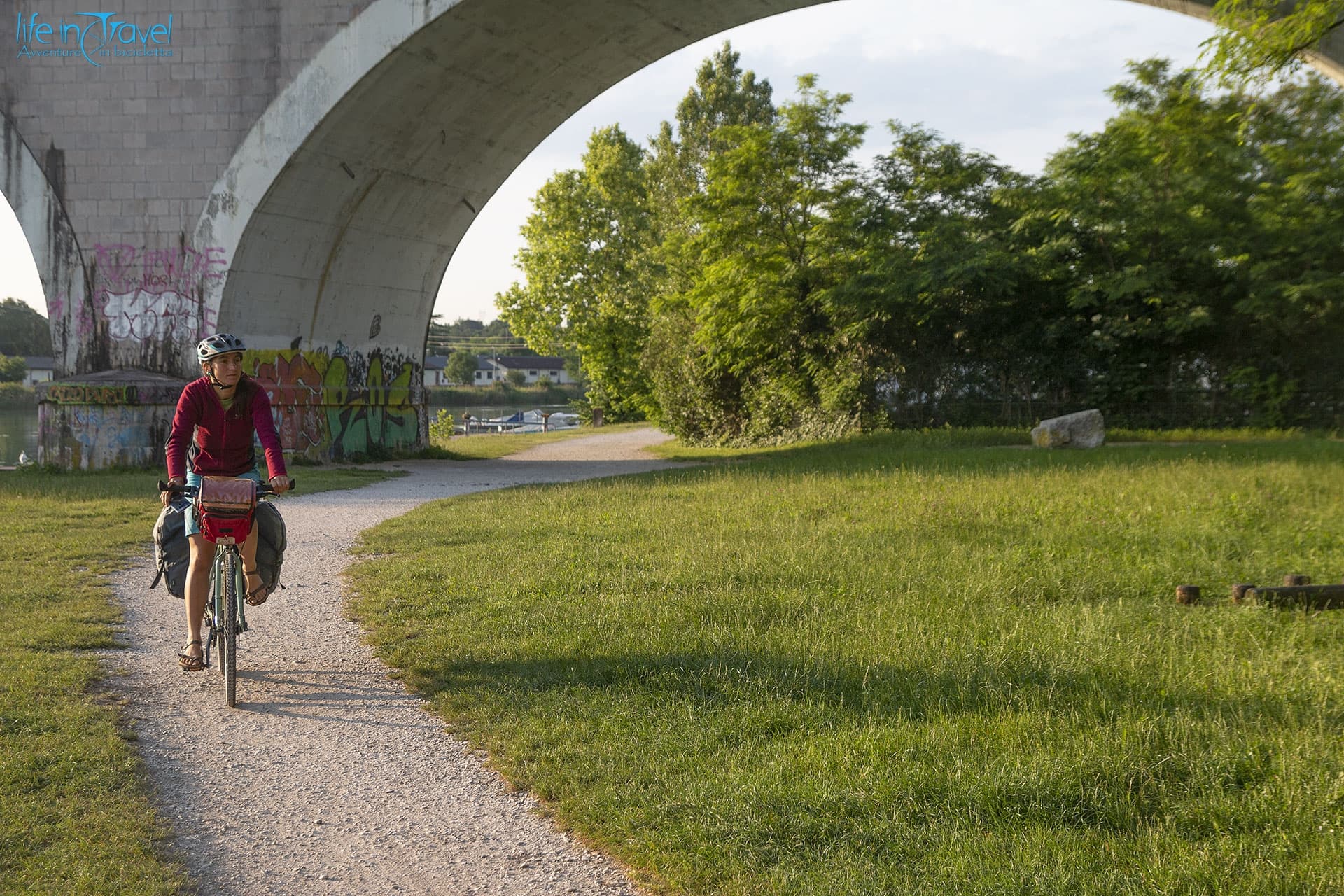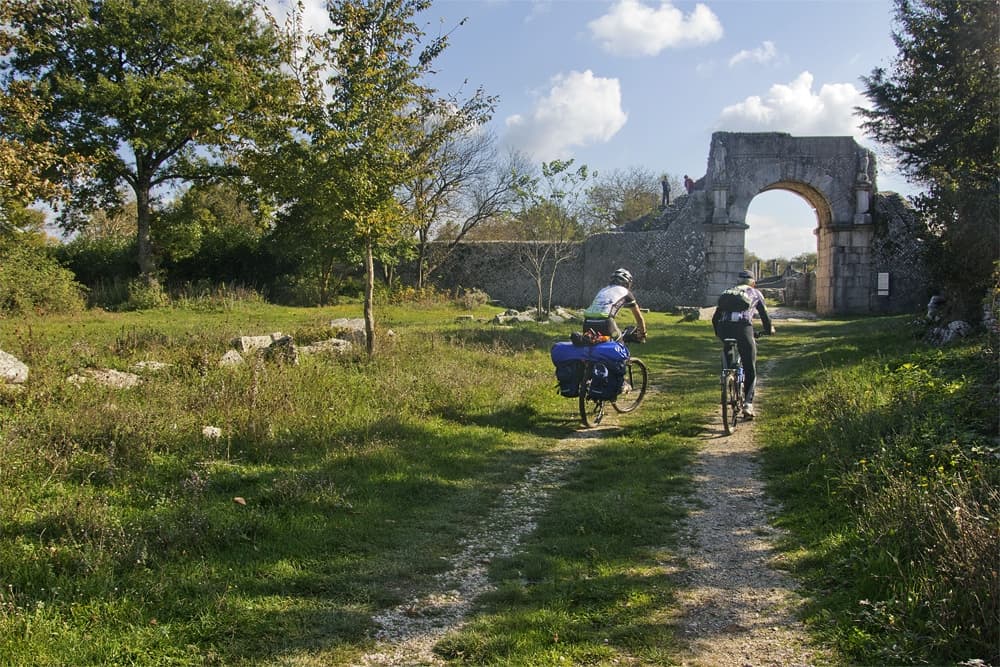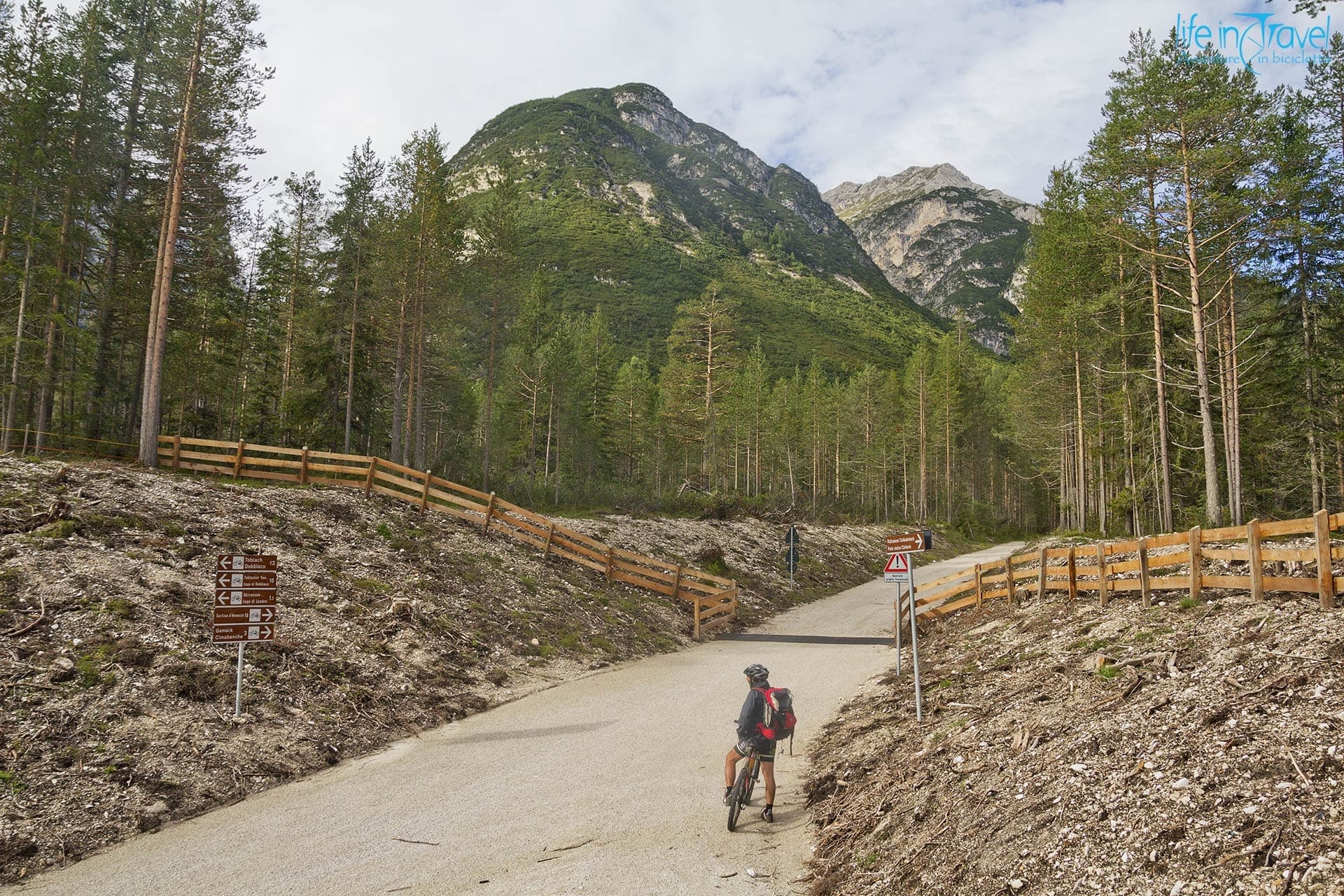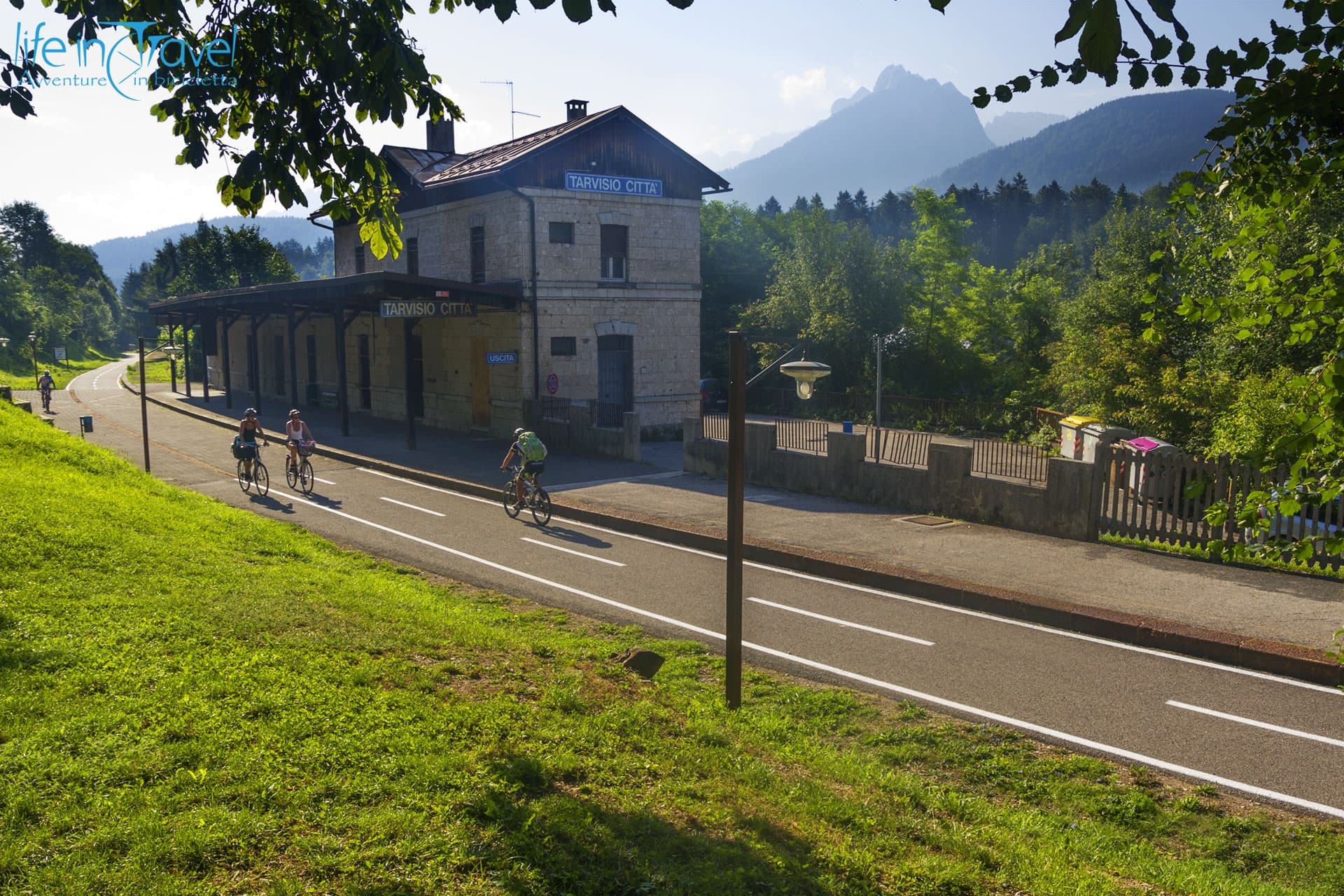Rome, Italy's capital, is a big and crowded city. Cycling safely in the streets of this Eternal City might sound utopic but, if you know the right itineraries, it magically becomes something possible. Pedal through the Appian Way is a "must do" in order to visit Rome in an eco-friendly way.
The construction of the "Regina Viarum" began in 312 B.C. by Appius Claudius, from whom it was named: Appia Antica, the Appian Way. You can easily cycle through the first 16 km (XI Roman miles), from Porta di San Sebastiano in the historical centre until Santa Maria della Mole, south from the city.
The cycle path of Appian way starts in the Quartiere Quadraro and passes through the majority of the Appian Way Regional Park in order to discover its most suggestive corners and ist most fascinating stories, then it reaches the heart of the Appian Way, and finally comes back to the starting point through Valle della Caffarella.
The Quartiere Quadraro
The Appian Way road ring starts at Paolo's B&B Martini Bed, in the Quartiere Quadraro, where we'll be staying for some days. It's a quiet place, well connected by public transports (you have the metro as well - Porta Furba stop), the ideal spot for a bicycle holiday in order to discover Rome and its surroundings. One of the many features of this area is the presence of numerous street art artworks, which make the streets more colourful and pleasant to pedal through. Nonetheless, you can rent a bike from the guys at Gazebike, literally two feet from the B&B.
From our starting point, you cross Piazza del Quadraretto, then enter Via del Quadraretto until the bike and pedestrian crossing over the railway.

By turning left, in a dozen meters, you enter the Torre del Fiscale Park, a green area just before the aqueduct area of the Appian Way Regional Park.
In the Appian Way Regional Park
Entering Tor Fiscale is a jump into the past: the Aqua Felice, commissioned by Sixtus V during the Middle-ages, stands out over the green of the park in an everlasting battle against the Aqua Claudia, the other aqueduct built in 52 A.C.

The asphalt makes room to the gravel road while you cycle through these ageless monuments... Rome appears far in the silence of the park, however, the path is developed into the capital, and you wouldn't tell. Incredible, right?
From Tor Fiscale a dirt road connects the way to the aqueducts area without any danger for cyclists. The landscape is wonderful and with some imagination - or a good guide - you can fly back in time 2000 years. On the itinerary let's pass the Casale di Roma vecchia and the Fosso dell'acqua Mariana, an artificial duct realized in 1122 by Pope Callixtus II that was so important that every channel and duct in Rome took the name le marrane. After passing one of the arches of the aqueduct Aqua Claudia, you pedal along the golf course on the asphalt.
The landscape is wonderful and with some imagination - or a good guide - you can fly back in time 2000 years. On the itinerary let's pass the Casale di Roma vecchia and the Fosso dell'acqua Mariana, an artificial duct realized in 1122 by Pope Callixtus II that was so important that every channel and duct in Rome took the name le marrane. After passing one of the arches of the aqueduct Aqua Claudia, you pedal along the golf course on the asphalt.
 The landscape is wonderful and with some imagination - or a good guide - you can fly back in time 2000 years. On the itinerary let's pass the Casale di Roma vecchia and the Fosso dell'acqua Mariana, an artificial duct realized in 1122 by Pope Callixtus II that was so important that every channel and duct in Rome took the name le marrane. After passing one of the arches of the aqueduct Aqua Claudia, you pedal along the golf course on the asphalt.
The landscape is wonderful and with some imagination - or a good guide - you can fly back in time 2000 years. On the itinerary let's pass the Casale di Roma vecchia and the Fosso dell'acqua Mariana, an artificial duct realized in 1122 by Pope Callixtus II that was so important that every channel and duct in Rome took the name le marrane. After passing one of the arches of the aqueduct Aqua Claudia, you pedal along the golf course on the asphalt.After this mixed road and by crossing the highly busy Via Appia Nuova (in total security at a red light), you will reach the real Appian Way. 

The Regina Viarum
The most beautiful adjectives that you might think won't be enough to describe the sensations you will feel pedalling the first time through the old basoli (stones) of the Appian Way consumed by the time. A mix of excitement and joy with sprinkles of sincere curiosity. The Appian Way moves towards the south and to the left goes out of the city, whether to the right it connects back to the historical centre near Porta di San Sebastiano. In our track we turn left, so we can immerse in ruins of statues, sepulchres, temples and towers. The first monument attracting our attention along the Appian Way by bicycle is Villa dei Quintili, on the left. This old villa, having its own aqueduct, was built on the V mile on a small promontory created by lava flows of the volcano in Lazio.
The first monument attracting our attention along the Appian Way by bicycle is Villa dei Quintili, on the left. This old villa, having its own aqueduct, was built on the V mile on a small promontory created by lava flows of the volcano in Lazio. 
 The first monument attracting our attention along the Appian Way by bicycle is Villa dei Quintili, on the left. This old villa, having its own aqueduct, was built on the V mile on a small promontory created by lava flows of the volcano in Lazio.
The first monument attracting our attention along the Appian Way by bicycle is Villa dei Quintili, on the left. This old villa, having its own aqueduct, was built on the V mile on a small promontory created by lava flows of the volcano in Lazio. 
Leaving behind the villa, we keep pedalling through some ruins under the shadows of the maritime pines and cypresses. When the Appian Way was built, the goal was to connect Rome to Capua with a direct road, without detours... and so, for the first 90 km until Terracina, it appeared to be an endless straight road of basoli.

Today you will find these basoli only on some parts of the road, so you will only need a good city bike or, for the most challenging parts, a mountain bike.
Let's move on: at mile IV of this paved road, we find a marble high-relief representing a naked man and, just after, the tower of Capo di Bove, anticipating the entrance on the mile III.

The Appian Way, just after Via Cecilia Metella, is squeezed by the church of San Nicola (without its roof) and the complex with the Castle of Caetani from XIV century and Cecilia Metella's grave dating 50 B.C. circa. With the same ticket entrance to the grave (6€) you can visit the Baths of Caracalla and Villa dei Quintili.

Not to be missed, between miles II and I, the Villa of Maxentius, with a circus hosting up to 10.000 visitors. The access is free, but you will have to leave the bicycle outside, so bring a lock with you.
After a few wheel rotations, you will reach the San Sebastian church and the access to the catacombs: just proceed some metres against the flow (it would be better by pushing the bicycle) and turn left following the directions of the Catacombe di San Callisto (cross the gate, but take note about the opening hours and the Wednesday closing day) in order to avoid the chaos. The road uphill to reach the catacombs, 4 floors for a total of 12.000 sq. metres is short and not particularly challenging. Thanks to this short detour, the advantage is that you won't pedal in the Appian Way the wrong way: this might be really risky during rush hours.
 After the visit of the underground system of the catacombs, you can come back on the Appian Way, that is no more exclusive for bicycles and pedestrians. If you want to continue until the centre of Rome, turn left but be careful and mind the cars and buses until Porta San Sebastiano. If you want to end this ring cycle path, turn right passing the Quo Vadis little church and entering, after 60 metres, Via Cafarella on the left.
After the visit of the underground system of the catacombs, you can come back on the Appian Way, that is no more exclusive for bicycles and pedestrians. If you want to continue until the centre of Rome, turn left but be careful and mind the cars and buses until Porta San Sebastiano. If you want to end this ring cycle path, turn right passing the Quo Vadis little church and entering, after 60 metres, Via Cafarella on the left.
 After the visit of the underground system of the catacombs, you can come back on the Appian Way, that is no more exclusive for bicycles and pedestrians. If you want to continue until the centre of Rome, turn left but be careful and mind the cars and buses until Porta San Sebastiano. If you want to end this ring cycle path, turn right passing the Quo Vadis little church and entering, after 60 metres, Via Cafarella on the left.
After the visit of the underground system of the catacombs, you can come back on the Appian Way, that is no more exclusive for bicycles and pedestrians. If you want to continue until the centre of Rome, turn left but be careful and mind the cars and buses until Porta San Sebastiano. If you want to end this ring cycle path, turn right passing the Quo Vadis little church and entering, after 60 metres, Via Cafarella on the left.The Caffarella Valley by bicycle
The Caffarella Valley, created by the Almone river, is part of the Appian Way Regional and a safe area to pedal in. It is one of the biggest urban green areas in Europe. In it, a maze of small tracks and dirt roads creates a real playground for bicycles. In the valley, you will find some historical ruins and artefacts like the Ninfeo of Egeria (II century A.C.) or the Colombario Costantiniano, a sepulchre from II century A.C. near one of the exits.
It is one of the biggest urban green areas in Europe. In it, a maze of small tracks and dirt roads creates a real playground for bicycles. In the valley, you will find some historical ruins and artefacts like the Ninfeo of Egeria (II century A.C.) or the Colombario Costantiniano, a sepulchre from II century A.C. near one of the exits. After some kilometres into Nature, near the Egeria Water factory, in Via Almone, we leave the Caffarella Valley behind our backs. Just after, the itinerary continues on the mixed road until it reaches the interception with Via Appia Nuova (be careful when crossing it!!). Once you passed the obstacle of crossing the new Appian Way, you pedal for a few metres against the flow on the sidewalk until you reach Via Anicio Paolino. Secondary roads without any traffic bring you back to the Torre del Fiscale park, from where you can reach the starting point and end one of the best cycling routes in Rome.
After some kilometres into Nature, near the Egeria Water factory, in Via Almone, we leave the Caffarella Valley behind our backs. Just after, the itinerary continues on the mixed road until it reaches the interception with Via Appia Nuova (be careful when crossing it!!). Once you passed the obstacle of crossing the new Appian Way, you pedal for a few metres against the flow on the sidewalk until you reach Via Anicio Paolino. Secondary roads without any traffic bring you back to the Torre del Fiscale park, from where you can reach the starting point and end one of the best cycling routes in Rome. 
 It is one of the biggest urban green areas in Europe. In it, a maze of small tracks and dirt roads creates a real playground for bicycles. In the valley, you will find some historical ruins and artefacts like the Ninfeo of Egeria (II century A.C.) or the Colombario Costantiniano, a sepulchre from II century A.C. near one of the exits.
It is one of the biggest urban green areas in Europe. In it, a maze of small tracks and dirt roads creates a real playground for bicycles. In the valley, you will find some historical ruins and artefacts like the Ninfeo of Egeria (II century A.C.) or the Colombario Costantiniano, a sepulchre from II century A.C. near one of the exits. After some kilometres into Nature, near the Egeria Water factory, in Via Almone, we leave the Caffarella Valley behind our backs. Just after, the itinerary continues on the mixed road until it reaches the interception with Via Appia Nuova (be careful when crossing it!!). Once you passed the obstacle of crossing the new Appian Way, you pedal for a few metres against the flow on the sidewalk until you reach Via Anicio Paolino. Secondary roads without any traffic bring you back to the Torre del Fiscale park, from where you can reach the starting point and end one of the best cycling routes in Rome.
After some kilometres into Nature, near the Egeria Water factory, in Via Almone, we leave the Caffarella Valley behind our backs. Just after, the itinerary continues on the mixed road until it reaches the interception with Via Appia Nuova (be careful when crossing it!!). Once you passed the obstacle of crossing the new Appian Way, you pedal for a few metres against the flow on the sidewalk until you reach Via Anicio Paolino. Secondary roads without any traffic bring you back to the Torre del Fiscale park, from where you can reach the starting point and end one of the best cycling routes in Rome. 
B&B Martini Bed
Sleeping in Rome
 Our starting point of this bicycle itinerary along the Appian Way was b&b Martini Bed, situated in the southern neighbourhood called Quadraro. The structure is located in a quiet area well served by restaurants, supermarkets, bike shops and other kinds of shops, the Rome underground with Porta Furba stop. In B&B Martini Bed it is possible to rent a bike, park your car in a safe place, use the small bike and repair garage, obtain maps and information about tracks and roads for bicycle tourists directly by your host Paolo, a passionate bicycle tourer and traveller.
Our starting point of this bicycle itinerary along the Appian Way was b&b Martini Bed, situated in the southern neighbourhood called Quadraro. The structure is located in a quiet area well served by restaurants, supermarkets, bike shops and other kinds of shops, the Rome underground with Porta Furba stop. In B&B Martini Bed it is possible to rent a bike, park your car in a safe place, use the small bike and repair garage, obtain maps and information about tracks and roads for bicycle tourists directly by your host Paolo, a passionate bicycle tourer and traveller.
